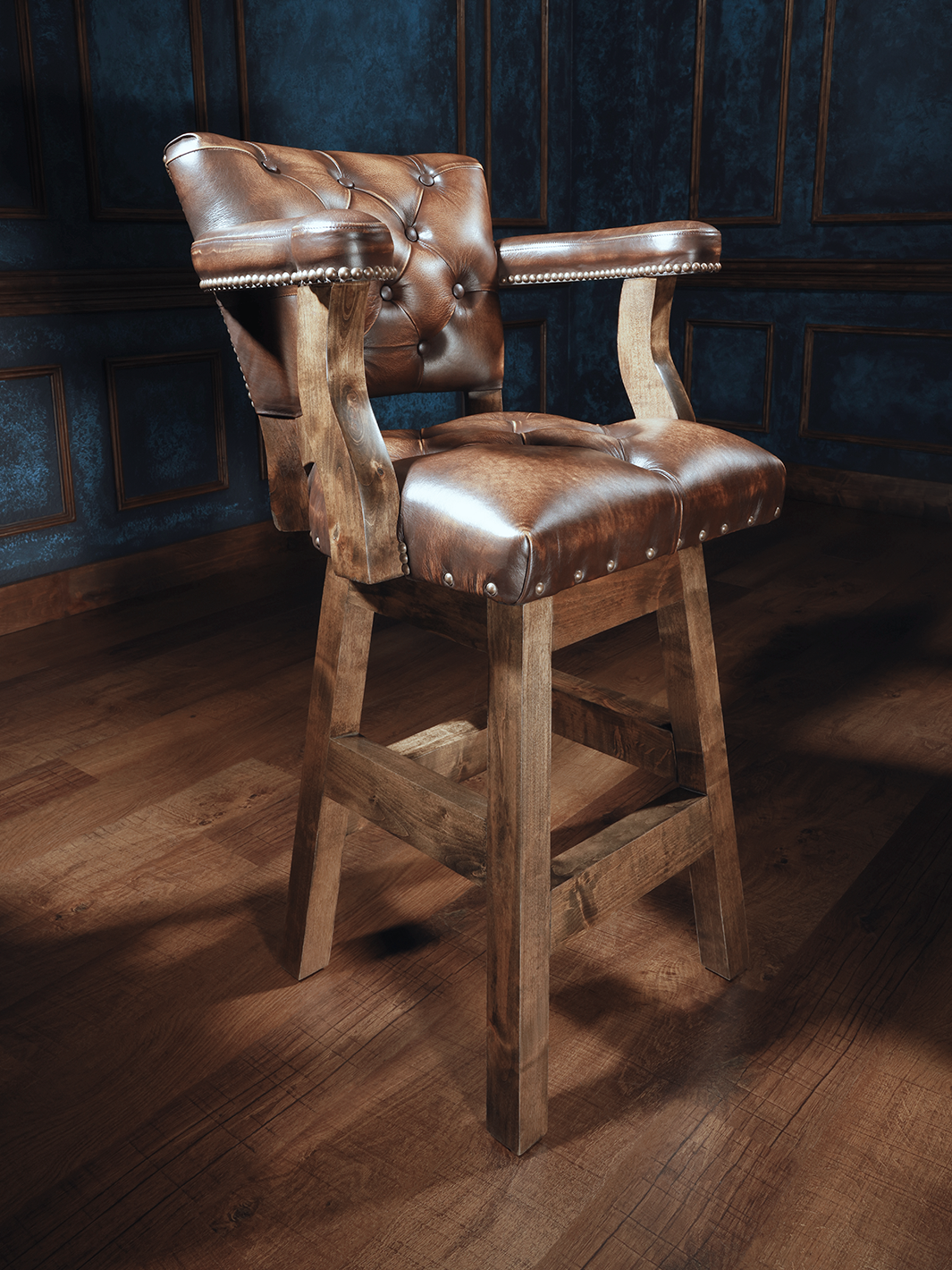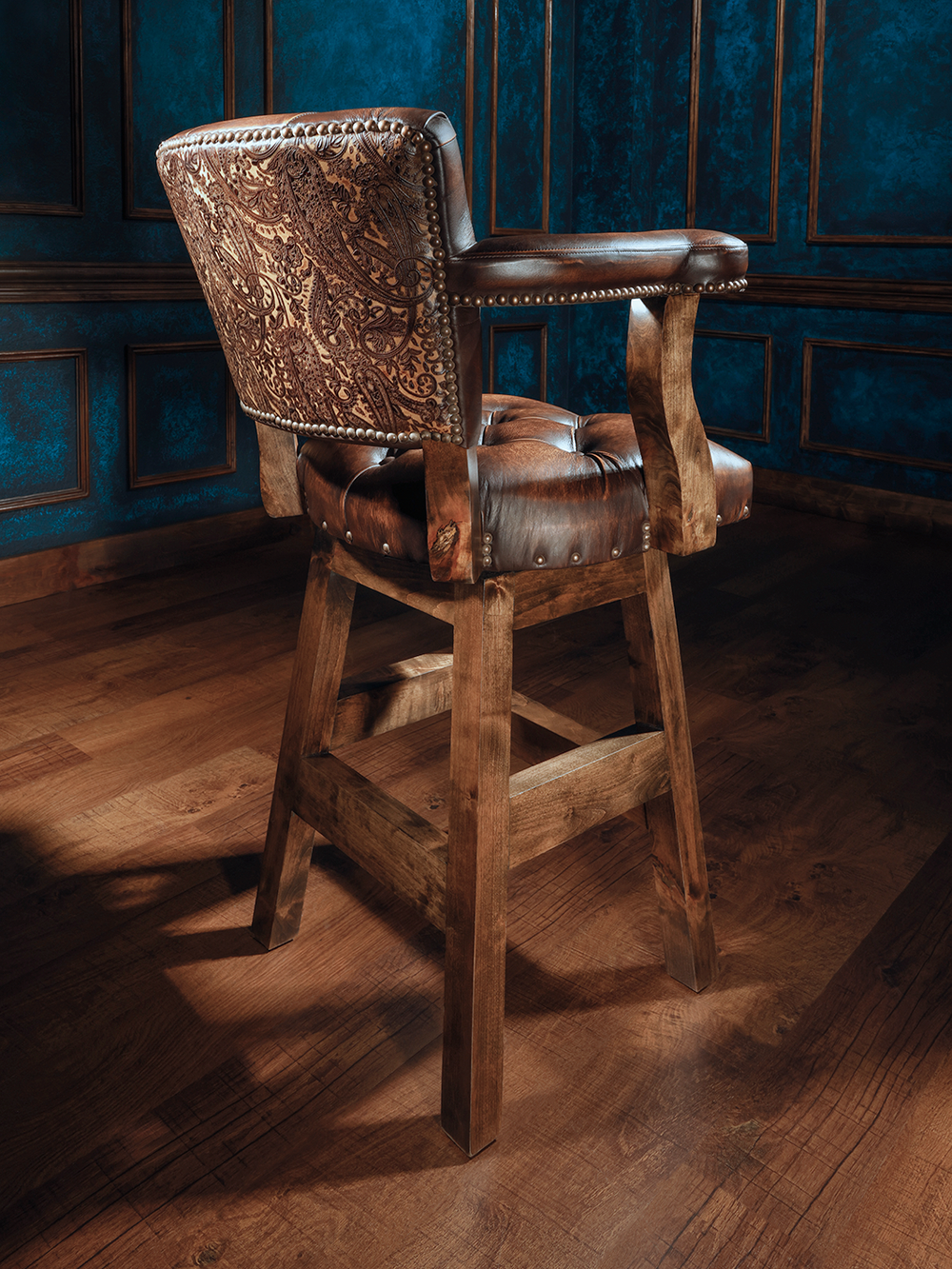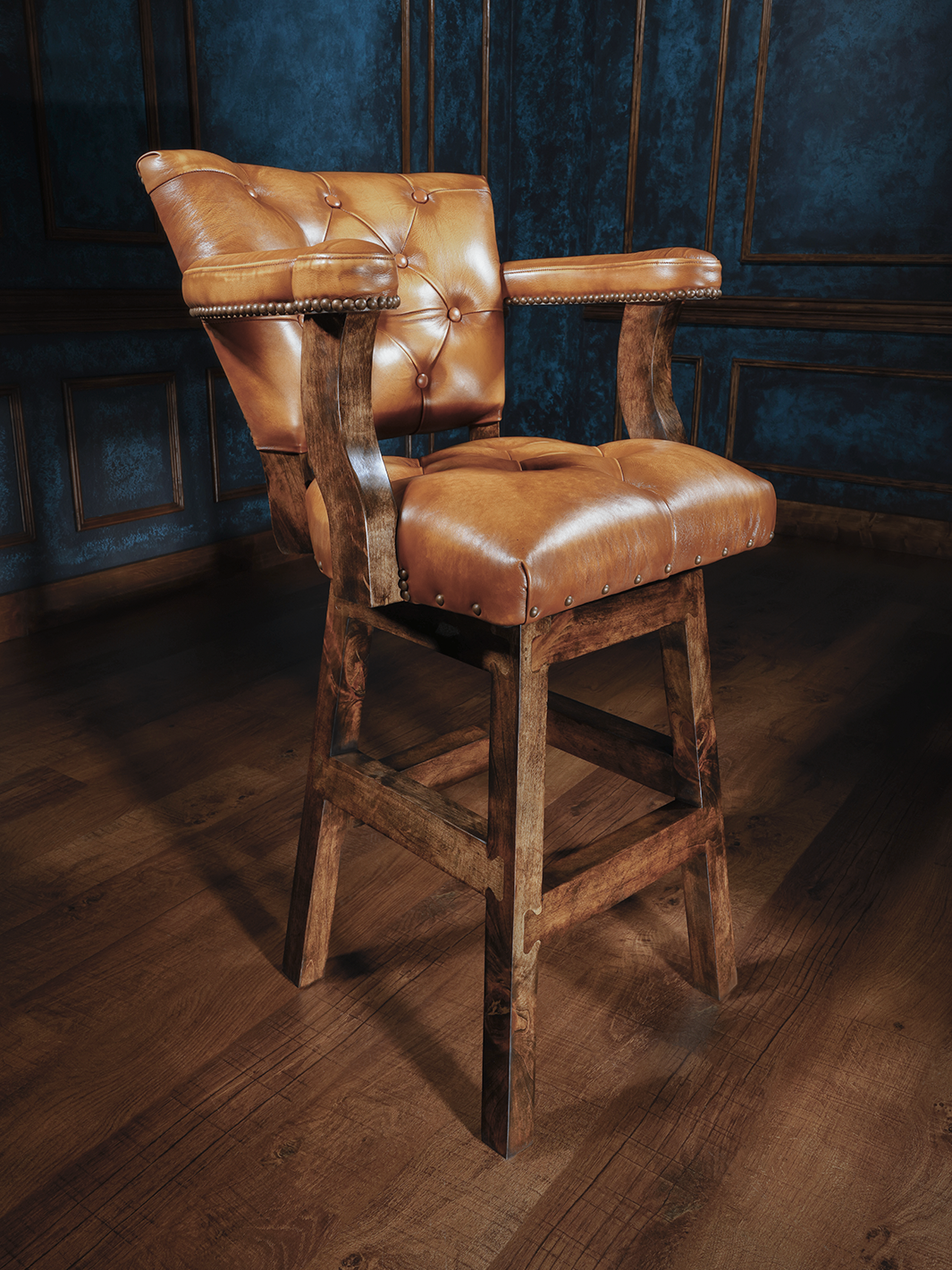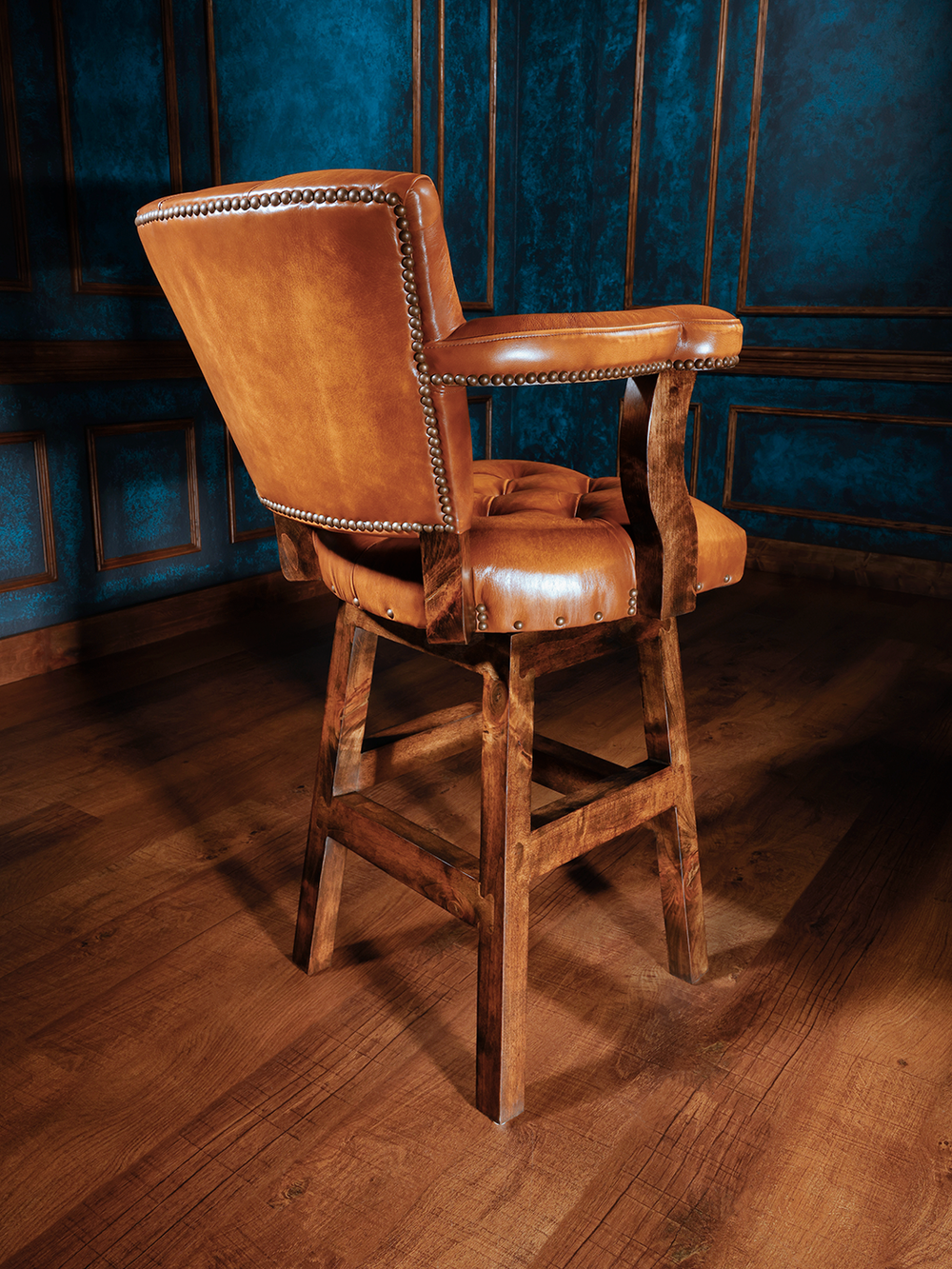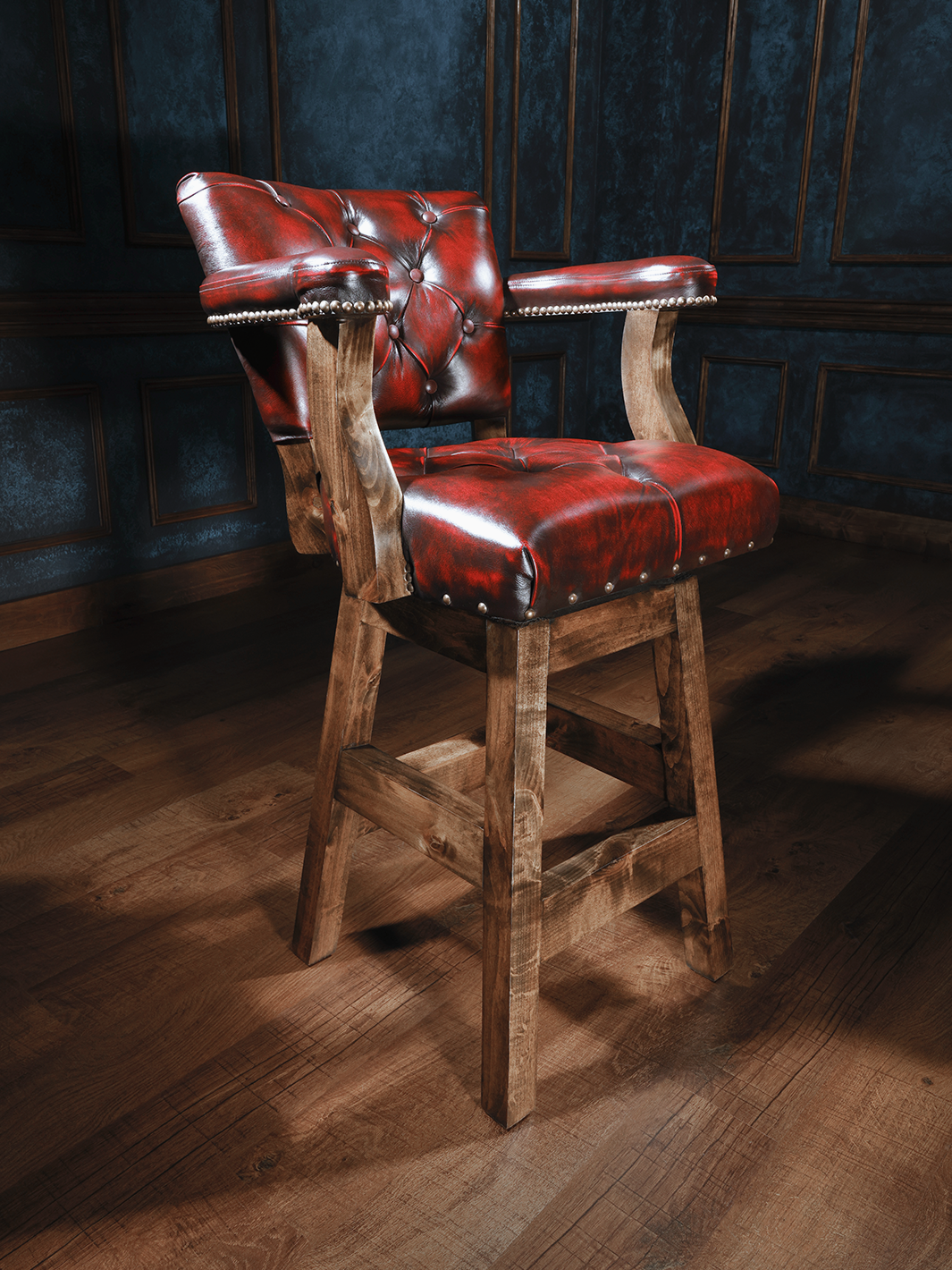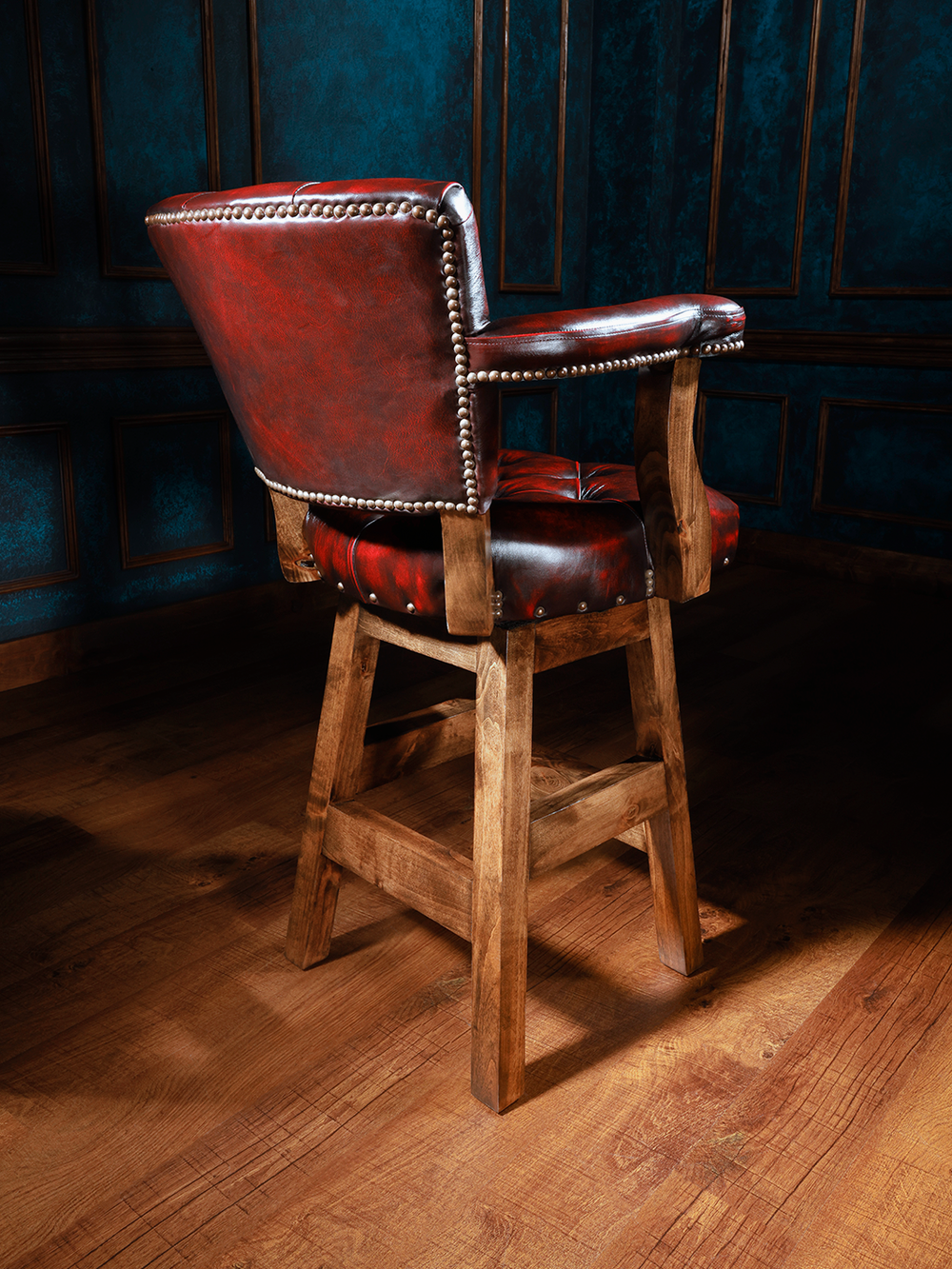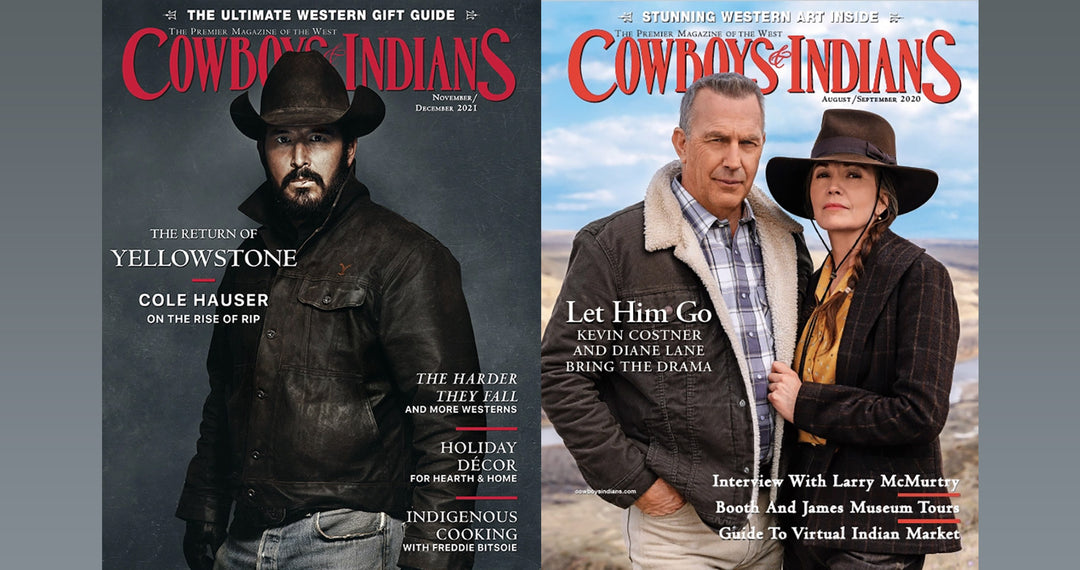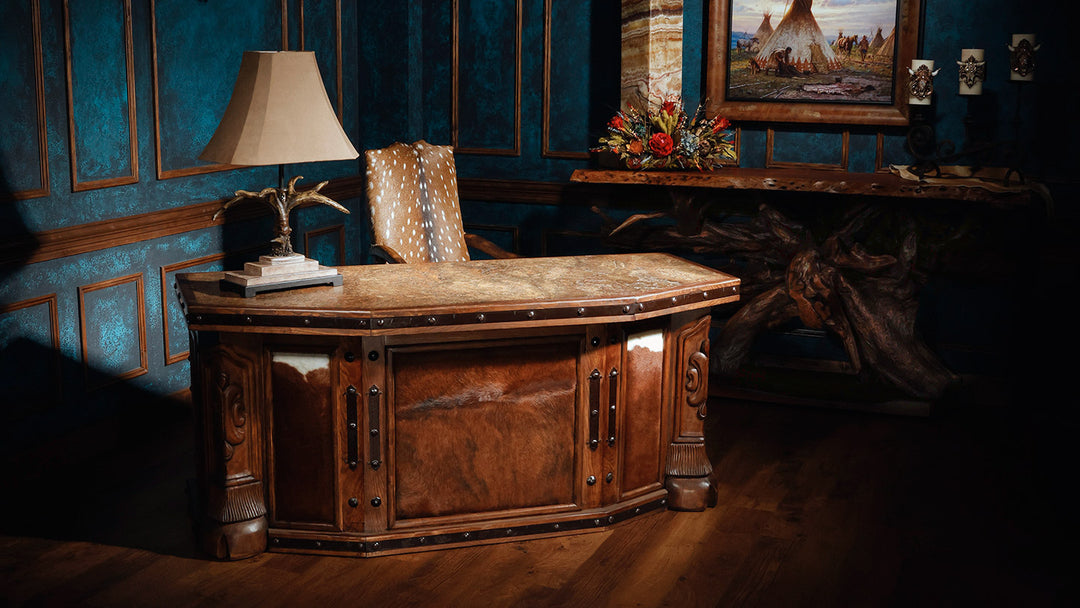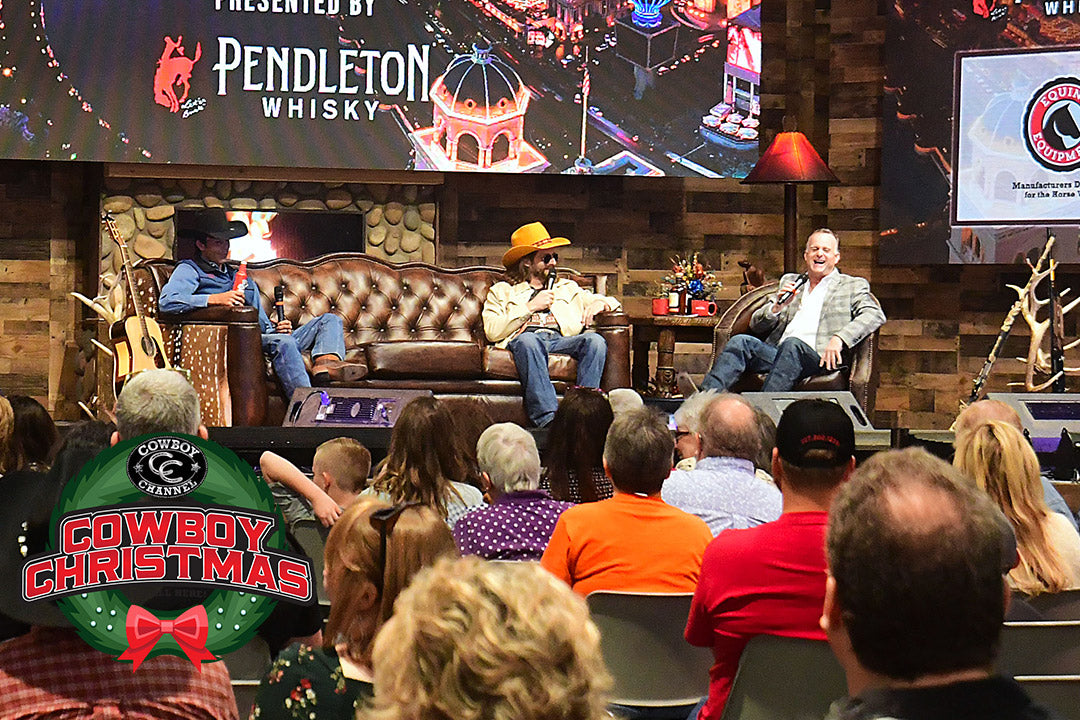Leather Types
Aniline Leather ///
1. WHAT IS FULL ANILINE LEATHER?
Full Aniline leather is made from the most durable and strongest part of the animal hide and known to be the most natural sort of leather, earning it the name. It's dyed in vats with soluble dyes so that the color runs all the way through the hide, giving it a lush, rich color. No protective coating or surface coloring is added to the hide in order to preserve its natural feel and appearance. Furthermore, the leathers retain their original marks and texture, adding to the leather's authenticity. Due to its exceptional quality and look, aniline leather is one of the most sought-after leathers. This leather is designed to age and patina gracefully, increasing its beauty over time.
2. THE MAKING PROCESS
Aniline leather comes from natural Napa leather. The term "napa" describes exceptionally soft, tanned animal hides. The tanned animal skin is coloured in a drum with aniline dyes during the production of aniline leather. Aniline dye is a synthetic, transparent, water-soluble colorant free of insoluble pigments. Each hide's inherent grain, including all of the blemishes, scars, and wrinkles, are brought out throughout the coloring process. No protective coating or surface tinting is used in order to preserve the natural texture and color of the hide.
3. FULL ANILINE LEATHER QUALITY & APPEARANCE
QUALITY
Due to the variable rates of absorption from area to area, the color of the leather during the aniline dyeing process is not consistent throughout. This demonstrates the genuineness of the leather finish and enhances its beauty. Aniline leather is extremely sought-after as aniline coloring is only viable for the best-quality hides. The leather absorbs the aniline color and oils, giving it more suppleness and a rich appearance.
APPEARANCE
Aniline leather showcases all of the animal's development marks naturally, along with scars, creases, and other imperfections. Aniline leather will have more authentic hues that come from the skin tone of the animal. With time, the leather's natural patina acquires a rich character, making it even more alluring. An aniline leather will alter, mark, and stain while slowly easing into its rich patina.
4. KEY FEATURES
- Most natural, most beautiful leather with an ultra soft handle
- Most comfortable seating comfort due to breathability
- Develops a patina and improves with age
- More sensitive to sunlight and requires more maintenance
- Generally the most expensive of all leather types
- Unprotected
5. WHAT ARE THE DIFFERENT KINDS OF EFFECTS/VARIANTS?
- Wax and oil broken effect
- Oil pull up effect
- Waxy pull up effect
- “Bomber jacket” Effect
- Two Toned Effect: A result achieved by coating a piece of leather with layers of comparable or opposing dyes to give it a worn or varied look.
6. WHAT ARE THE ADVANTAGES AND DISADVANTAGES OF ANILINE LEATHER?
ADVANTAGES
Due to its superior quality and attractiveness, aniline leather has the distinction of being one of the most sought-after leathers. By absorbing body oils and coming into contact with skin, it gradually acquires a patina. Due to the lack of additional processing and coatings, it is soft to the touch.
DISADVANTAGES
Aniline leather is easily tarnished since it is not protected. Because of this, it is not advised to use it in furniture for families with young children and/or pets.
7. WHAT TO FACTOR IN BEFORE PURCHASING FULL ANILINE?
Because this leather is not protected, simple maintenance is required on a regular basis because it easily stains and marks. It requires conditioning to keep from drying out because it fades in the sunshine. Aniline leather furniture might not be appropriate for families with young children and animals.
8. DOES ANILINE LEATHER PEEL?
No. Because the translucent aniline color may absorb into the leather, aniline leather does not peel. As a result, it won't flake or peel.
9. ANILINE LEATHER CARE - Click here
The leather won't dry out or crack if you keep it hydrated. Dry leather will be rehydrated and given its supple, natural feel by a competent leather restorative.
Semi-aniline Leather ///
1. WHAT IS SEMI ANILINE LEATHER?
Drum dyed leather made up with a small amount of pigment, adding a translucent protective finish while still maintaining the natural characteristics of the leather.
2. MAKING PROCESS
Similar to how aniline leathers are made, the process begins there. Semi-aniline leathers are further treated, in contrast to full aniline leathers, whose treatment ends with the dying process. To ensure a uniform color, a light protective coating that may also contain some additional pigment is placed to the top of the hide after the leather has been aniline dyed. Some imperfections will be hidden by the tinted coating, resulting in a more consistent surface texture. The leather can then have various finishes added to it, either manually or mechanically. The leather is ultimately given a transparent protective coating to make it sun and stain resistant.
3. WHAT IS THE QUALITY AND APPEARANCE OF SEMI?
QUALITY
Due to the thin protective coating, semi aniline is considered to be one of the most durable.
APPEARANCE
Semi-aniline leather is slightly firmer and cool to the touch, and it does not highlight the natural characteristics like all aniline leather.
4. WHAT ARE THE DIFFERENT KINDS OF EFFECTS/VARIANTS?
- Natural milled grain, hand rubbed look/tritone shades
- Waxy crackled effect
- White wax, cracked look
5. WHAT ARE THE BENEFITS AND THINGS TO FACTOR IN BEFORE PURCHASING AN ITEM MADE UP OF SEMI?
Semi-aniline leather is a premium leather with several benefits. Semi-aniline leather has the benefit of being substantially more durable than full aniline leather. This is as a result of the thin covering that serves as protection. It is the ideal choice for things that will be used frequently and strongly recommended for households containing young children and/or pets. While still being strong, it feels pliable and gentle. Additionally, it lessens the likelihood that it will sustain scratches or other types of damage while maintaining the natural beauty of genuine leather. In comparison to pure aniline leather, it is also simpler to keep and clean.
6. WHAT IS THE DIFFERENCE BETWEEN FULL ANILINE VS SEMI?
- Semi-aniline leather goes through a buffing process while full aniline leather does not . This process is done to remove and/or tone down any major substantial imperfections from the leather surface. The leather tones are then evened out using spot embossing. Once even leather tones are obtained, the pigment is added.
- Semi-aniline dyes do have a slight tint, in contrast to translucent aniline dyes. Because of the slight coloration, Semi-aniline is strengthened and stain-resistant. Therefore, semi-aniline leather has a lot of the characteristics of aniline leather and will eventually acquire a distinctive wear pattern and patina, but it is much less prominent.
- Semi-aniline leather is protected while full aniline leather is not.
7. WHAT ARE THE ADVANTAGES AND DISADVANTAGES OF SEMI ANILINE LEATHER?
ADVANTAGES
Semi-aniline leather has a more uniform color and is more stain-resistant, yet it still has the distinctiveness of aniline leather. It is less prone to damage and can withstand harsher environments. Semi-aniline leather-upholstered pieces could also be a little less pricey yet still high quality.
DISADVANTAGES
The piece lacks the distinctive attraction of aniline leather because the markings are not as evident. This is not for you if you are seeking greater authenticity.
8. WHAT ARE THE MAIN FEATURES OF SEMI ANILINE LEATHER?
- Greater resilience and attributes.
- Long-lasting look and a soft feel.
- Less upkeep is needed, making it ideal for high utilization locations.
PROTECTED LEATHER (Corrected Grain Leather) ///
9. WHAT IS PROTECTED LEATHER?
Also known as “corrected leather” , It is a unique kind of leather that expert leather-workers mend and modify in order to enhance both its performance and aesthetic appeal. On top, a synthetic grain has been stamped and coated with pigments and/or stains. Typically, blemishes are sanded down before being mended. In other words, protected leather is blemish-free leather that has been buffed, then has a fresh, synthetic grain applied using dyes and other treatments.
10. HOW IS PROTECTED LEATHER MADE?
The procedure entails extensively buffing the leather's surface top layer to eliminate any imperfections. A heavy protective coating is then applied to the leather which colors and seals the top layer of the leather. This results in a finish that is much more resistant to stains and obtains a more even consistent look. In simple terms, what you truly see when looking at protected leather is the finish.
11. WHAT ARE THE ADVANTAGES AND DISADVANTAGES OF PROTECTED LEATHER?
ADVANTAGES
- Protected leather requires little upkeep and may withstand a variety of environments and uses. You should be able to discover the amount of protection that best suits your needs as there are various types available.
- If you intend to retain the leather for a long time, protected leather is an excellent option because it doesn't wear easily.
- The most affordable and minimal maintenance is required.
DISADVANTAGES
- This kind of leather lacks the natural distinctiveness of aniline leather.
12. WHAT ARE THE FEATURES OF PROTECTED LEATHER?
- Uniformity of color
- Natural markings will be less apparent (if sealed and/or buffed)
- Not as soft compared to others
- Somewhat permeable
- Exceptional fading resistance
- Excellent resistance to stains
NUBUCK ///
1. WHAT IS NUBUCK?
Drum aniline dyed leather that has been lightly "napped" with oil on the top grain to give it a matte, suede-like appearance.
2. HOW IS NUBUCK MADE?
The top-grain layer of cowhide or calfskin is needed to produce nubuck leather. The inner layer, which is involved in creating suede, is softer and more malleable than the top-grain layer. But in order to provide a uniform appearance, the top grain is scraped and polished on the outside because it could have significant lines and imperfections. The leather has a silky surface as a result of the subtle nap of short protein fibers left over from the sanding process. It is stained and dyed to conceal any flaws that may still be present in the nubuck surface.
3. QUALITY
Nubuck is tougher and more robust than suede because it is created from top-grain leather. Nevertheless, because of its rough surface, it is more prone to discoloration and stains than other leathers.
4. APPEARANCE
The nubuck leather can be stained or dyed to any color after being buffed or sanded to give it the plush feel and appearance. It is delicate to the touch and is easily scuffed. Nubuck's surface can change color when rubbed because the small fibers' inclination fluctuates. With repeated use, nubuck occasionally gets a patina.
5. ADVANTAGES
- Nubuck is long-lasting and extremely durable since it is crafted from top-grain leather.
- Due to its smooth surface, which only needs the occasional washing, it requires less upkeep than many other leathers.
- Unlike several other varieties of leather, it doesn't require shining or polishing.
6. DISADVANTAGES
- Nubuck is not ideal for uses where its surface will be exposed to mud, grime, or grit, which is one of its disadvantages.
- Nubuck leather also stains easily.
- The leather is NOT protected.
EMBOSSED LEATHER ///
WHAT IS EMBOSSED LEATHER?
A type of leather that has been "stamped" to replicate the appearance of full grain by applying a pattern under intense pressure in a press. Oftentimes leathers are embossed to give the appearance that they are another leather, such as floral or crocodile patterns.
GENERAL QUESTIONS / GLOSSARY
- What are aniline dyes? Your piece of furniture will feel even more comfortable thanks to the silky, glove-soft texture that aniline dye produces. Aniline dyed leathers are tumbled for up to 12 hours in drums containing translucent dyes that create this plush softness and their lavish gem-like hues. Each hide's inherent texture and color variations are highlighted by these dyes. A gorgeous patina that develops over time on aniline dyed leather increases its value as a decorative element in your home. For this category, only quality hides with the most aesthetically pleasing color and texture are chosen.
- Drum Dyed Method A method of dyeing leather that provides maximum color penetration. The leather is submerged in the dye and placed into a spinning drum. This process can take up to 12 hours.
- Sanding Term Refers to the process of stripping a hide of any grain, scars, or flaws.


